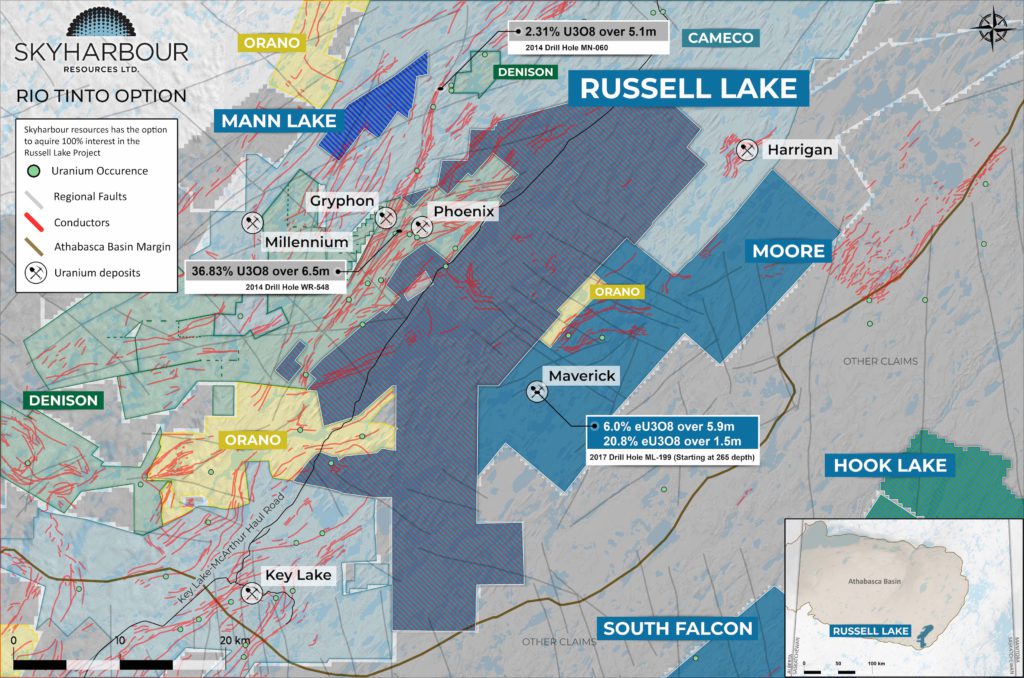Russell Lake is also next to Skyharbour’s flagship Moore project, which makes it especially attractive, the junior said.
“Uranium properties with the pedigree and perspectivity of Russell Lake are few and far between,” president and CEO Jordan Trimble said in the statement. “[It is in a] very strategic location, notable historical exploration and findings, as well as the numerous property-wide targets with the potential to generate new discoveries,” he said.
Under the terms of the agreement, Skyharbour can earn a 51% stake in Russell Lake via a cash payment of $500,000 and the issuance of 3.6 million shares, along with $5.7 million in exploration spend over three years.
An additional 19% may then be earned via a $1.6 million cash payment or the issuance of 2.2 million shares, and $6.4 million in exploration spend over two years.
Skyharbour can then earn the remaining 30% interest in the property by paying to Rio Tinto $33 million in cash or via 42.6 million shares of the company, provided Rio’s ownership doesn’t exceed 19.9% of Skyharbour.

While there has been historical exploration carried out at the Russell Lake, the junior noted that most of it happened before 2010.
“The property has been the subject of over 95,000 metres of drilling in over 230 drill holes. The property’s claims are in good standing for 2-22 years with assessment credits built-up from previous programmes,” the company said.
After years of depressed prices and halted production, the uranium market is experiencing a modest revival on supply worries steaming from sanctions against Russia’s state-owned atomic energy company, Rosatom.
Earlier this month, Cameco and Orano increased their stakes in the Cigar Lake uranium mine in northern Saskatchewan by buying Idemitsu Canada Resources’ 7.9% interest in the asset for C$187 million (about $144m).
The company is also restarting its McArthur River mine and Key Lake mill this year, which have been in care and maintenance since mid-2018.
For years, Canada was the world’s largest uranium producer, accounting for about 22% of world output, but in 2009, was overtaken by Kazakhstan.




